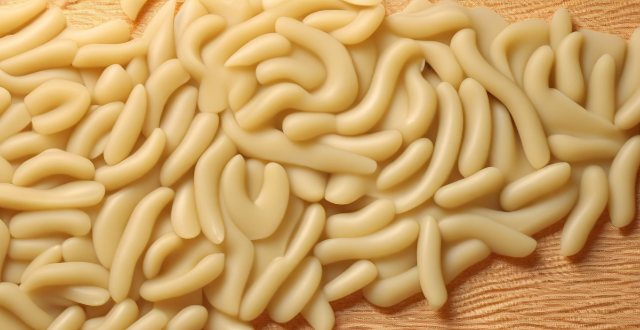Water Drain

How do I unclog a drain without calling a plumber ?
Unclogging a drain is a common household problem that can be solved without calling a plumber. Here are some steps you can follow to unclog your drain: 1. Identify the clogged drain by looking for signs such as slow draining, gurgling sounds, and bad odors. 2. Gather your tools, including a plunger, baking soda, vinegar, boiling water, and a drain snake (optional). 3. Use a plunger to create suction and dislodge any blockages in the pipe. 4. If the plunger doesn't work, try using baking soda and vinegar. Pour 1/2 cup of baking soda into the drain, followed by 1/2 cup of vinegar. Let the mixture sit for 10-15 minutes, then pour boiling water down the drain. 5. If the previous methods don't work, use a drain snake to break up any blockages in the pipe. Run hot water through the drain to flush it away. 6. To prevent future clogs, avoid pouring grease or oil down your drains and regularly clean your drains with baking soda and vinegar.

What are some easy DIY plumbing repairs for homeowners ?
Plumbing repairs can be intimidating for homeowners, but there are several simple and straightforward tasks that you can do yourself without the need for a professional plumber. Here are some easy DIY plumbing repairs that homeowners can tackle: 1. Fixing a Leaky Faucet: To fix a leaky faucet, turn off the water supply, remove the handle, use a wrench to unscrew the packing nut and replace any worn-out washers or O-rings. Reassemble the faucet and turn on the water supply to check for leaks. 2. Unclogging a Drain: Clogged drains are another common plumbing issue that homeowners can easily fix themselves. First, try using a plunger to create suction and force the clog through the drain. If the plunger doesn't work, use a drain snake to physically remove the clog from the drain pipe. Once the clog is removed, run hot water through the drain to clear any remaining debris. 3. Replacing a Toilet Flapper Valve: If your toilet won't stop running, it may be due to a faulty flapper valve. Turn off the water supply to the toilet and flush it to empty the tank. Remove the old flapper valve by unhooking it from the chain and unscrewing it from the overflow tube. Install the new flapper valve by screwing it onto the overflow tube and reattaching the chain to the handle lever. Turn on the water supply and test the toilet to make sure it works properly. These are just a few examples of easy DIY plumbing repairs that homeowners can do themselves. By tackling these simple tasks, you can save money on plumbing bills and gain confidence in your ability to maintain your home's plumbing system. However, if you encounter more complex issues or feel uncomfortable performing certain repairs, it's always best to consult with a professional plumber.

Does immigration policy contribute to brain drain in certain countries ?
Immigration policy can contribute to brain drain by offering attractive programs for skilled workers and students, providing better economic opportunities and living conditions, and catering to social and cultural factors. This results in a loss of talent for source countries but can also lead to brain circulation if individuals return with valuable skills.

What are some common mistakes that drain an iPhone's battery quickly ?
The text discusses common mistakes that drain an iPhone's battery quickly, including leaving apps running in the background, using brightness settings incorrectly, keeping Wi-Fi and Bluetooth always on, not updating apps and iOS, using excessive widgets and notifications, and overheating your iPhone. To avoid these mistakes, you should close apps completely, reduce the brightness level or enable Auto-Brightness, turn off Wi-Fi and Bluetooth when not in use or enable Airplane Mode, update your apps and iOS regularly, limit the number of widgets and notifications you use or disable them altogether, and avoid exposing your phone to direct sunlight or leaving it in a hot car.

How do I cook perfect al dente pasta at home ?
To cook al dente pasta, start by selecting a high-quality pasta and filling a large pot with water. Add salt and bring the water to a boil. Once boiling, add the pasta and stir immediately. Check for doneness frequently and drain as soon as it reaches the desired consistency. Serve immediately or reserve for later use. Tips include undercooking slightly, saving some pasta water, avoiding overcrowding the pot, and using a timer to remind yourself to check for doneness.

How does deforestation contribute to water cycle disruption ?
Deforestation contributes to water cycle disruption through soil erosion, surface runoff, and groundwater depletion. This leads to droughts, flooding, pollution, water scarcity, and climate change. Sustainable forest management is crucial to mitigate these effects.

How effective are large-scale water transfer projects in alleviating water scarcity ?
Water scarcity is a global issue, and large-scale water transfer projects aim to alleviate it by transporting water from areas with abundant resources to those with scarce ones. These projects can increase water availability, diversify water sources, and provide environmental benefits such as restoring depleted aquifers and wetlands. However, they also face challenges like high costs, negative environmental impacts, and social and political issues. To maximize the benefits of these projects while minimizing their drawbacks, careful consideration of their potential consequences and involvement of all relevant stakeholders in the decision-making process are essential.

How can we improve water resource management in our community ?
The article discusses the importance of water resource management in our community and suggests various strategies to improve it. These include raising awareness through educational campaigns, implementing water-saving measures like fixing leaks and using low-flow fixtures, upgrading infrastructure such as wastewater treatment plants, promoting sustainable practices like xeriscaping and green roofs, and fostering collaborative efforts among different stakeholders. By adopting these approaches, we can ensure the long-term availability of clean water while protecting the environment.

How does climate change affect water resources and availability ?
Climate change affects water resources and availability through melting glaciers, changes in precipitation patterns, sea level rise, increased evaporation rates, and impacts on ecosystems. These impacts can lead to water scarcity, flooding, contamination of freshwater sources, and declines in biodiversity. To mitigate these effects, it is important to reduce greenhouse gas emissions and implement adaptation strategies such as improved water management and conservation measures.

How can we balance economic development and water resource protection ?
Water resources are crucial for economic development but must be protected to ensure sustainability. Strategies for balancing these goals include prioritizing sustainable practices, implementing regulatory measures, fostering collaboration and partnerships, investing in infrastructure and technology, and educating and creating awareness. By adopting these approaches, we can achieve a balance between economic growth and water conservation, ensuring long-term sustainability for all.

What are some effective strategies for teaching water safety to children ?
Water safety is an essential skill that every child should learn, especially during the summer months when they are more likely to be around water. Here are some effective strategies for teaching water safety to children: Start early, set clear rules, use visual aids, practice makes perfect, role playing, stay close and supervised, teach risk assessment, and be a good example.

In what ways do dams and reservoirs affect downstream water ecosystems ?
Dams and reservoirs significantly alter downstream water ecosystems by changing water flow, trapping sediments, disrupting nutrient cycles, fragmenting habitats, and affecting biodiversity.

How can I reduce my electricity and water bills ?
To reduce electricity and water bills, one should switchTo reduce electricity and water bills, one should switch, adjust habits like turning off install water-saving fixtures, change bathroom habits, optimize garden watering, and be efficient with laundry and dishes.

How does climate change affect the quality and availability of drinking water ?
This article discusses the various ways in which climate change affects the quality and availability of drinking water, including changes in precipitation patterns, melting glaciers, sea level rise, temperature increase, extreme weather events, and wildfires. It also explores adaptation strategies such as water conservation measures, infrastructure improvements, protection of water sources, and policy and regulation to mitigate these risks and ensure a sustainable water future for all.

How do I overcome my fear of water and learn to swim ?
Overcoming a fear of water and learning to swim is a process that requires patience, persistence, and the right approach. Here's how you can do it: identify the source of your fear, gradually expose yourself to water, find a supportive instructor, start with basics in shallow water, progress slowly, use relaxation techniques, set realistic goals, celebrate small victories, join a swimming group or class, and always prioritize safety.

How does climate change impact water resource management ?
Climate change significantly impacts water resource management by altering precipitation patterns, increasing evaporation rates, and changing runoff patterns. These changes lead to more variable rainfall, prolonged droughts or intense flooding, reduced snowpack, and earlier spring runoff, among other effects. To adapt, strategies such as water conservation, infrastructure upgrades, integrated planning, ecosystem restoration, and improved monitoring and forecasting are essential for ensuring sustainable water resources amidst a changing climate.

What are some tips for reducing water consumption at home ?
Reducing water consumption at home can be achieved through various methods, including fixing leaks, installing water-saving fixtures, using efficient appliances, changing habits, being smart with gardening, and monitoring usage. By checking for drips, tightening fixtures, upgrading to low-flow toilets and showerheads, using Energy Star washers and dishwashers, turning off the tap while brushing teeth or shaving, watering the garden in the morning, and regularly reading the water meter, households can save money on utility bills and contribute to a more sustainable environment.

Are AirPods waterproof or water-resistant ?
This text discusses the water resistance of Apple's AirPods, highlighting that the original and second-generation models have no official water resistance rating, whereas the AirPods Pro and third-generation models carry an IPX4 rating for water resistance. It explains the meaning of the IPX4 rating, offers safety precautions to protect AirPods from water damage, and concludes by emphasizing that AirPods are not completely waterproof.

How do I implement water conservation measures at home ?
Water conservation is crucial for sustaining the environment and ensuring future generations have access to clean water. Here's how you can implement water conservation measures in your home: identify areas of water consumption, repair leaks promptly, collect rainwater, educate family members, and regularly review your habits. By implementing these measures, you can significantly reduce your home's water usage and contribute to a more sustainable future for our planet.

How does ecological design address issues related to water management and consumption ?
Ecological design addresses water management and consumption issues through strategies such as rainwater harvesting, water recycling, using native plants in landscaping, installing efficient water fixtures, permeable paving, smart water management systems, and promoting education on water conservation.

What is the best way to track and manage my water usage ?
Effective strategies for tracking and managing water consumption include understanding your water bill, installing a water meter, using smart monitoring devices, categorizing usage, fixing leaks promptly, upgrading to water-efficient appliances, optimizing daily activities, and setting conservation goals.